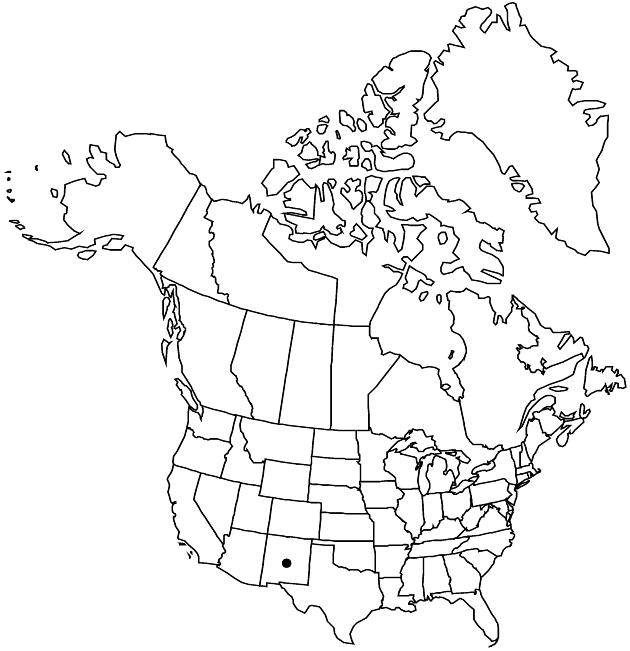Difference between revisions of "Packera cynthioides"
Phytologia 49: 46. 1981.
FNA>Volume Importer |
FNA>Volume Importer |
(No difference)
| |
Revision as of 18:41, 24 September 2019
Perennials, 20–40+ cm; rhizomatous (rhizomes horizontal to erect). Stems 1 or 2–3, clustered, densely lanate-tomentose or canescent, tufts of arachnoid tomentum in leaf axils, or glabrescent. Basal leaves (thick, leathery) petiolate; blades narrowly lanceolate or oblanceolate, 25–100+ × 5–20 mm, bases tapering, margins entire, subentire, dentate, or wavy (adaxial faces early glabrescent). Cauline leaves gradually reduced (sessile; lanceolate to oblanceolate, entire or wavy). Heads 10–30+ in open or congested, cymiform arrays. Peduncles 0 (or relatively reduced, then densely tomentose). Calyculi inconspicuous (bractlets red-tipped). Phyllaries (8–)13, green (tips red), 3–6 mm, densely tomentose proximally, glabrate distally. Ray florets (5–)8; corolla laminae 8–10+ mm. Disc florets 35–45+; corolla tubes 2.5–3.5 mm, limbs 3.5–4.5 mm. Cypselae 1–1.5 mm, glabrous; pappi 5–6 mm. 2n = 46.
Phenology: Flowering late Jul–mid Sep.
Habitat: Loose rocky soils, steep slopes, subalpine and pine-juniper forests
Elevation: 2200–2900 m
Discussion
Packera cynthioides blooms later than other Packera species at the same latitudes. It is noted by collectors as usually growing on north- or west-facing slopes in limestone-derived soils. Its cauline leaves are well developed and held at a shallow angle to the stem, giving the plant a more “leafy” aspect than other members of the genus.
Selected References
None.
